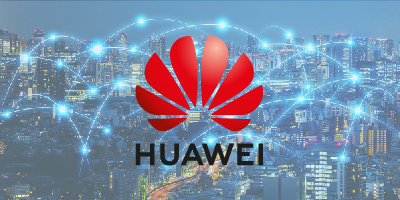The fourth industrial revolution, led by enabling technologies such as IoT, AI, cloud computing, and big data, serves as the impetus for enterprises to migrate their services to the cloud. Fueled by countries’ tech imperative and national strategy to digitalize economies and societies, enterprise cloud adoption is poised to grow, with IDC predicting that 85% of enterprises will have deployed new digital infrastructure in the cloud by 2025.
Featured Articles
Singapore: Why this small city-state is a regional innovation hub
ExpiredSingapore helms the top spot as Asia Pacific’s most innovative country according to the latest Global Innovation Index released in 2020. This makes it the seventh consecutive year that Singapore covets the first spot across economies in the region. Globally, Singapore is in the eighth spot, behind countries such as Switzerland in the top spot, the US, Britain, Denmark and Finland.
How can telecom operators overcome cyber threats in a 5G world
ExpiredWhile 5G promises endless possibilities with low-latency and high-speed connectivity, an increased number of IoT and smart devices open doors to new vulnerabilities. Not only will there be more entry points for cyberattacks, 5G can also lead to faster spread of botnet activities.
What China’s five-year plan means for local and overseas tech firms
ExpiredChina is bent on taking the lead in technology, with the nation pressing ahead in its quest for technological dominance, as highlighted in its fourth session of the 13th National People’s Congress (NPC) held over two days in early March.
Semiconductors shortage: The impact on industries and countries
ExpiredSemiconductors are enablers that support the rise of technologies such as artificial intelligence (AI) and IoT. Though tiny in size, these wafer-like circuit chips are instrumental in raising low-latency and reliable connectivity with the 5G and 4.0 industrial revolutions, compounded in this pandemic-stricken landscape.
Smart factories: The future of Asia’s manufacturing hub
ExpiredManufacturing is one of the key pillars of economies in the Asia Pacific (APAC) region. According to GlobeNewswire, APAC is the largest general manufacturing market in the world, accounting for 43% of the global market. With the advent of the Industry 4.0 revolution, the world’s largest manufacturing hub will experience significant shifts as connectivity becomes the backbone of next-generation factories, where artificial intelligence (AI), machine learning, cloud computing and the Internet of things (IoT) are being embraced to unleash technology-driven smart manufacturing.
Opportunities in Asia’s mobile money markets
ExpiredAccess to traditional banking services is limited in developing countries. The World Bank estimates that 1.7 billion adults are unbanked, yet more than 65% of them own a mobile phone. For this group of underserved in developing countries, mobile money is a technology that enables them to receive, store and spend money using just a mobile phone, in the absence of a bank account.
Automotive revolution: The race towards electric cars and autonomous driving
ExpiredAutonomous driving has been envisioned as the future of mobility to bring about benefits such as enhanced mobility, safer and less congested roads, as well as reduced environmental impacts. But owing to a combination of factors such as regulation, technology and infrastructure, it has not yet fully materialised. Nevertheless, the industry remains hopeful as technology providers, automobile companies and OEMs continue to secure strategic partnerships to gain a head start into the future of autonomous driving.
Harnessing artificial intelligence to transform telcos
ExpiredThe telecommunications industry is the backbone of technological growth and digital transformation. While revenues in the telecom sector declined in the first half of 2020, owing to economic impact as a result of the pandemic, GSMA reported that recovery took place in the second half of the year with increased consumers and households acquiring integrated bundle services and high-speed connectivity becoming sought after across all rungs of society.
MWC Shanghai 2021 in full swing in the large-scale hybrid event of its kind, hosted by GSMA
ExpiredMWC Shanghai 2021 kicked off yesterday as the first large-scale hybrid event of its kind, hosted by GSMA. Taking place from 23rd to 25th February, MWC Shanghai 2021 showcases Asia’s mobile industry.













